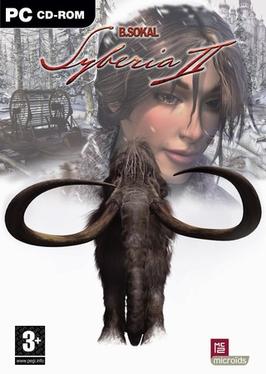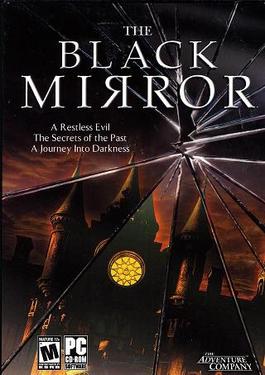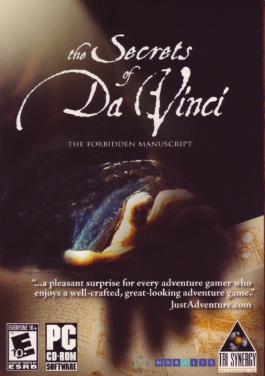
Syberia is a graphic adventure game, developed and published by Microïds, and released for Microsoft Windows, PlayStation 2, and Xbox on 9 January 2002, with the game later ported for Windows Mobile, Nintendo DS, Android, OS X, PlayStation 3, Xbox 360, iOS, and Nintendo Switch in later years. Created and designed by Belgian artist Benoît Sokal, Syberia is set in the same world as Sokal's 1999 video game Amerzone. It follows Kate Walker, an American lawyer tasked with overseeing the major sale of a company and her subsequent journey across Europe and Russia to find the brother of the recently deceased owner. Alongside the main plot, the story also consists of a subplot involving Kate's personal life.

Syberia II is a 2004 graphic adventure game developed and published by MC2-Microïds. As the direct sequel to 2002's Syberia, it is a third-person puzzle-solving game. Although it is stylistically identical, Syberia II improves upon the first game by introducing more realistic character animation. The game includes a recap of the first chapter, so it does not require the player to have experienced the first game.

Amerzone is a first-person fantasy graphic adventure game published by Microïds and designed by Benoît Sokal, who based it on his 1986 Inspector Canardo comic strip L'Amerzone. Amerzone was originally released for Microsoft Windows, the classic Mac OS and PlayStation in 1999, and re-released for iOS and Android in 2014 by Anuman Interactive, whom had bought out Microïds in 2009.

Benoît Sokal was a Belgian comic artist and video game developer, best known for his comics series Inspector Canardo, and the Syberia adventure game franchise.

Runaway: A Road Adventure is a 2001 graphic adventure game developed by the Spanish company Pendulo Studios and published by Dinamic Multimedia. It follows the story of Brian Basco, an American college student on the run after he unwittingly saves a murder witness named Gina Timmins from assassination by the New York Mafia. Searching for clues about a mysterious crucifix linked to the murder, Brian and Gina embark on a cross-country journey through the United States while pursued by two Mafia hitmen. The player assumes the role of Brian and explores the game world while collecting items, solving puzzles and conversing with non-player characters.

Conan is a 2004 action-adventure hack and slash game based on the literary character Conan the Barbarian created by Robert E. Howard. It was developed by Slovak developer Cauldron and released for the Xbox, GameCube, PlayStation 2, and Microsoft Windows in Europe.

Sam & Max: Freelance Police was a graphic adventure video game developed by LucasArts from 2002 until its cancellation in 2004, and the final game in the company's adventure game era. Freelance Police was originally intended for release for Windows in early 2004 as a sequel to the 1993 title Sam & Max Hit the Road. The game was based on the characters Sam & Max: an anthropomorphic dog and "hyperkinetic rabbity thing" who debuted in a 1987 comic book series created by Steve Purcell. Freelance Police was announced in August 2002, and showcased at the Electronic Entertainment Expo (E3) in 2003. Like its predecessor, Freelance Police was designed as a point-and-click adventure game, but used a 3D game engine in place of the SCUMM and GrimE engines used in older LucasArts adventure games. The project's development was led by Michael Stemmle, one of the original designers for Sam & Max Hit the Road, while Steve Purcell assisted in developing the game's plot and providing artistic direction.

The Moment of Silence is an investigative thriller adventure game developed in 2004 by German developer House of Tales.

Return to Mysterious Island is a 2004 graphic adventure game developed by Kheops Studio and published by The Adventure Company. Based on Jules Verne's 1875 novel The Mysterious Island, the game casts the player as Mina, a shipwrecked woman forced to survive on an uncharted island.

The Black Mirror is a third-person point-and-click horror adventure game developed in 2003 by Czech company Future Games. Its original name is Posel Smrti. The game features 150 locations and 5 hours of spoken dialogue. The Black Mirror became a commercial success, with 500,000 units sold worldwide by 2008. It was particularly successful in Germany, under publisher DTP Entertainment. Two sequels, Black Mirror II: Reigning Evil and Black Mirror III: Final Fear, were released. Additionally, a reboot titled Black Mirror was released in November 2017.

Atlantis III: The New World,, is a 2001 fantasy adventure video game developed and published by Cryo Interactive, with Dreamcatcher Interactive publishing the game in North America. David Rhodes composed the musical score. It is the third game in the Atlantis series by Cryo, as well as the last one made before Cryo's closure. It was followed by Atlantis Evolution in 2004.

Sinking Island: A Jack Norm Investigation is a third-person perspective adventure game that uses point and click game mechanics. Released in France on October 4, 2007. it was developed by White Birds Productions, a company founded and led by Benoît Sokal.

Dead Reefs is a game, developed by Canadian studio Streko-Graphics and published by The Adventure Company.

Jerusalem: The Three Roads to the Holy Land is a 2002 historical adventure game. The game was developed by Arxel Tribe and Réunion des Musées Nationaux, and published by Cryo Interactive. It is a sequel to the game Pompei: The Legend of Vesuvius.

Diabolik: The Original Sin is an adventure game developed by Italian studio Artematica Entertainment and published by Black Bean Games in 2009 for PlayStation 2, Wii, Windows, Nintendo DS, and PSP, based on the Italian comic book series Diabolik.

Martin Mystère: Operation Dorian Gray is the only video game adaptation of the Italian sci-fi detective comic-book franchise called Martin Mystère, starring a detective and his assistant, Java. It is a point-and-click adventure game, published in 2005 by The Adventure Company in North America and GMX Media in Europe. A Macintosh version was planned, but was cancelled in the evaluation stage. Versions for PlayStation 2 and Xbox were also planned, but were also cancelled.

The Secrets of Da Vinci: The Forbidden Manuscript is an adventure game developed by Kheops Studio and published by Tri Synergy on June 7, 2006 on the PC. In 2009 it was released on the Mac OS X.
Adibou is an educational video gaming series first developed by Coktel Vision in the 1990s. The franchise expanded into comic books, music and television series. Titles in the series follow Adiboo, a young alien who teaches children about a variety of topics including nature, maths, and language. Most stories are set in the world of Celesta.

Syberia is a franchise of graphic adventure games created by Belgian comic artist and video game developer Benoît Sokal. Set within an alternate universe designed by Sokal and introduced in the 1999 video game Amerzone, the series is currently developed and published by French video game company Microids. The central focus of the franchise, beginning with the eponymous 2002 video game, follows the experiences of Kate Walker, an American adventurer who originally worked as a lawyer in a prominent New York City law firm. In each installment, Walker travels to various fictional locations in continental Europe and former Soviet states during the 2000s, where she encounters fantastical creatures as well as highly advanced automatons powered by intricate clockwork mechanisms.


















